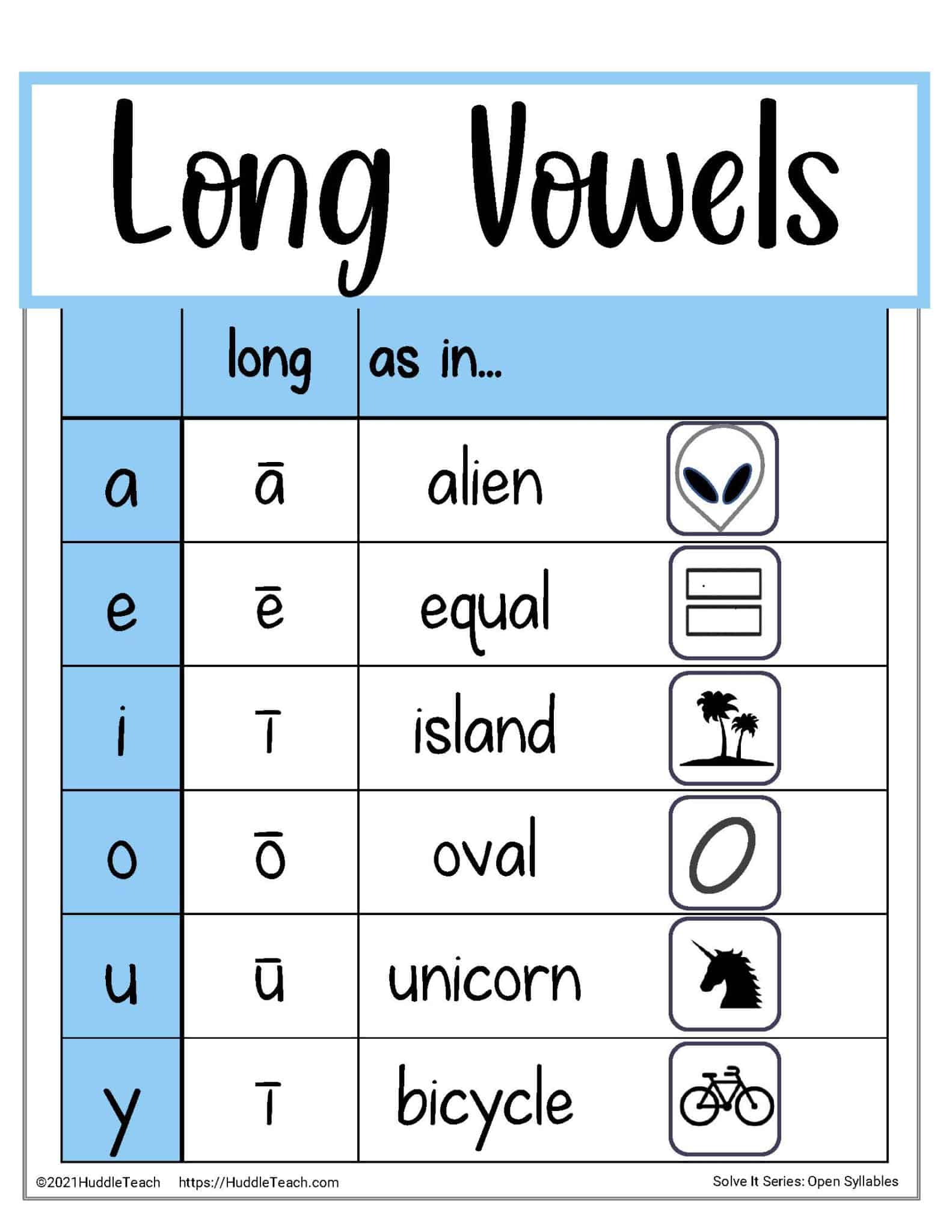
However you choose to use this list, be sure you provide lots of opportunities for practice! And check out all our syllables resources for more information and resources on syllables. Cut the words and ask your student to sort them according to nonsense, one, two, and three syllable words!
OPEN VOWEL SOUNDS PDF
So here is it as a free PDF worksheet with easy download! It’s sometimes difficult to find a comprehensive list of open syllables and 1, 2, and 3 syllable words with open syllables. We like to keep our Open & Closed Syllable House posters on display for students to reference while they work! The Words When teaching open syllables, you need to include nonsense syllables so children get familiar with this idea. Together, they make sense and form a real word. This is nonsense on its own, but makes sense when added to the closed syllable sĭc. Many multisyllabic words are made up of syllables that would be nonsense on their own. But if you’re new to SOR (Science of Reading) and work with kids who are still struggling to read multisyllabic words, you’ll want to teach open and closed syllables as soon as possible! Open Syllable Words 📚 Educational Focus: Ideally, you want to introduce these concepts beginning in 1st grade. You should teach open syllables along with or right after you have taught closed syllables.

Many words include open syllables, so it is necessary to teach children about open syllables as they become proficient readers. The vowel will always be a long vowel and say its name. 👉 Open Syllable Definition: An open syllable is a syllable that ends in a vowel. The short versions do not contrast directly with the open central vowel, which can only be long.This printable open syllables list is great for dictation, independent practice, and more, as students learn all about open syllables! The extremely rare contrast between open front, central and back unrounded vowels has been reported to occur in the Hamont-Achel dialect of Limburgish, which features long versions of these sounds, as well as short versions of the open front and back vowels. However, in practice the diaeresis is assumed to mean central, while ⟨ a̠⟩ and ⟨ ɒ̟⟩ are used for the front and back articulations, respectively. The diaeresis indicates centralization, so ⟨ ä⟩ could mean near-front and ⟨ ɒ̈⟩ could mean near-back. There is no unambiguous way of transcribing the open central vowels (but see obsolete/nonstandard IPA ᴀ). open central unrounded vowel or (commonly written as if it were front).

In the word pet, E is followed by T and says //. (In a closed syllable, a single vowel is followed by a consonant.) In the word cat, A is followed by T and says //. The most common way: a single vowel in a closed syllable usually says a short sound. terminology 1) in reference to the low position of the tongue. Short Vowels Can Be Spelled in Four Ways. Open vowels are sometimes also called low vowels (in U.S.

There also are central vowels that do not have dedicated symbols in the IPA: An open vowel is a vowel sound in which the tongue is positioned as far as possible from the roof of the mouth. The open vowels with dedicated symbols in the International Phonetic Alphabet are: That is, open-mid vowels, near-open vowels, and open vowels can all be considered low vowels. In the context of the phonology of any particular language, a low vowel can be any vowel that is more open than a mid vowel.

terminology ) in reference to the low position of the tongue. For the distinction between, / / and ⟨ ⟩, see IPA § Brackets and transcription delimiters.Īn open vowel is a vowel sound in which the tongue is positioned as far as possible from the roof of the mouth. For an introductory guide on IPA symbols, see Help:IPA. This article contains phonetic transcriptions in the International Phonetic Alphabet (IPA).


 0 kommentar(er)
0 kommentar(er)
